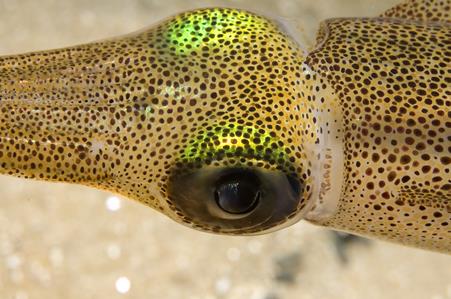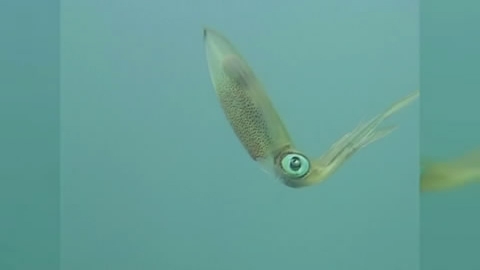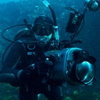General Description
Moderate to large, muscular, cylindrical, free-swimming squid. Fins extend along the entire length of body, combining to form diamond shape. Colour patterns are generally yellow-green to orange. Colour patterns often include three or four dark bars across upper or lower surfaces of body. Mantle length to 40 cm, total length to 50 cm, weight to approximately 4 kg.
Biology
This squid is common in shallow inshore waters, often in sand habitats and seagrass meadows. It is mainly active at night but can also be seen active during the day. Younger animals form small schools, with larger adults tending to be more solitary. They are fast swimmers, using both the fins and jet propulsion. They primarily feed on fish and shrimp and will regularly approach divers lights at night to catch fish attracted to the lights. Their main defences are high speed jetting and ink squirting but they are also capable of good camouflage amongst weed. Mating consists of males placing sperm packages within the gill cavity of the female. Females lay finger-like strings of white fleshy eggs amongst weed. Each string contains around six eggs, the separate egg segments becoming more obvious as the eggs mature. This squid is very popular for human consumption. It is caught as bycatch in trawl fisheries. Spawning aggregations are targeted as a small-scale fishery in Tasmania and South Australia. It is also very popular with recreational fishermen who use baitless jigs and long jig poles to fish from piers and jetties at dusk.
Habitat
Shallow inshore waters, often in sand habitats and seagrass meadows, usually to depth of 20 m, recorded to 68 m.
Seagrass meadows
Soft substrates
Reefs
Distribution guide
New Zealand and southern Australia.
Species Group
Depth
Shallow (1-30 m)
Deep ( > 30 m)
Water Column
Max Size
50 cm
Diet
Carnivore
Harmful
Potential to bite, especially if handled. Venom status unknown.
Commercial Species
Yes
Global Dispersal
Native to Australia
Identify
Conservation Status
- DSE Advisory List : Not listed
- EPBC Act 1999 : Not listed
- IUCN Red List : Not listed








